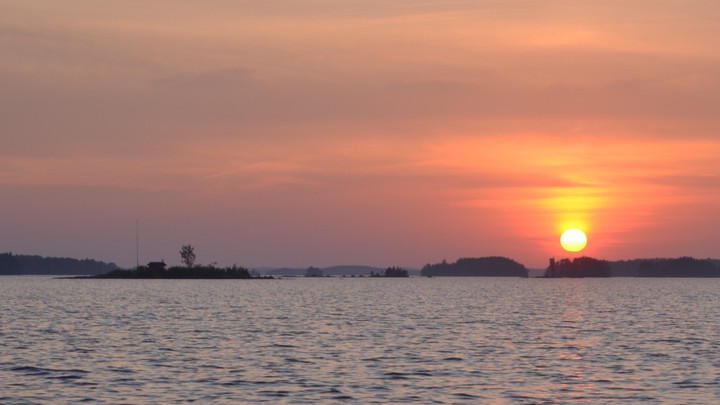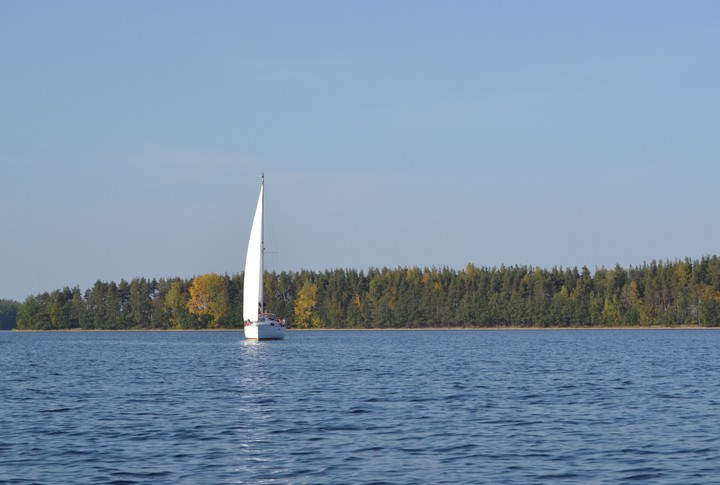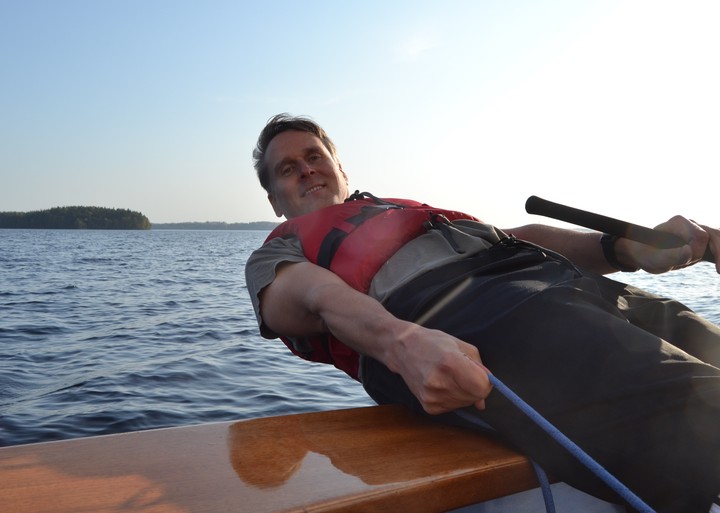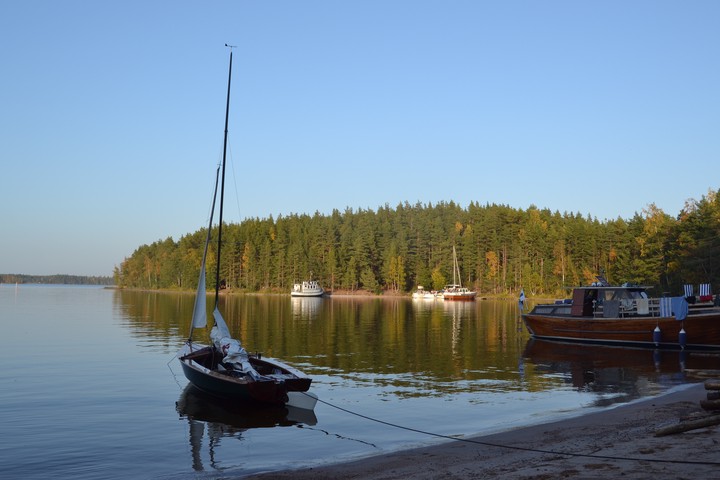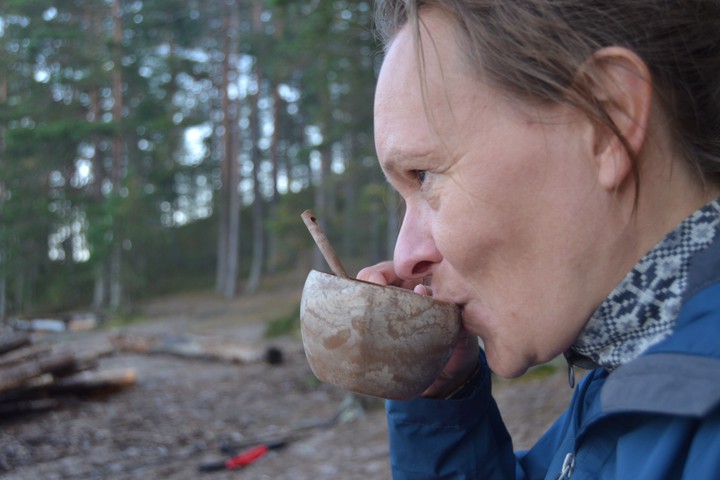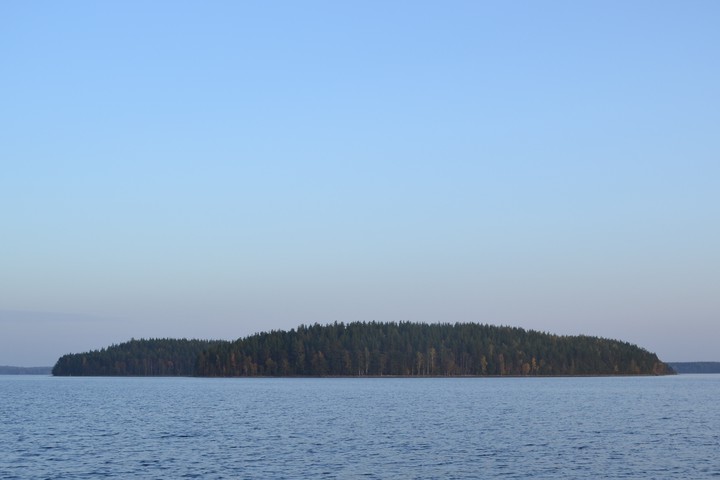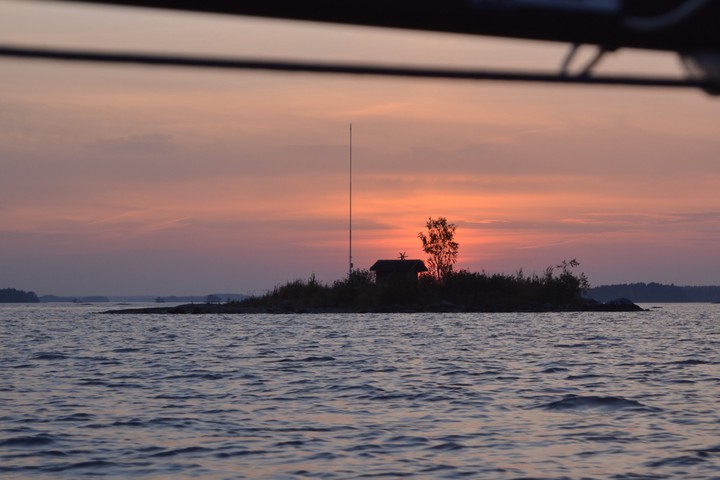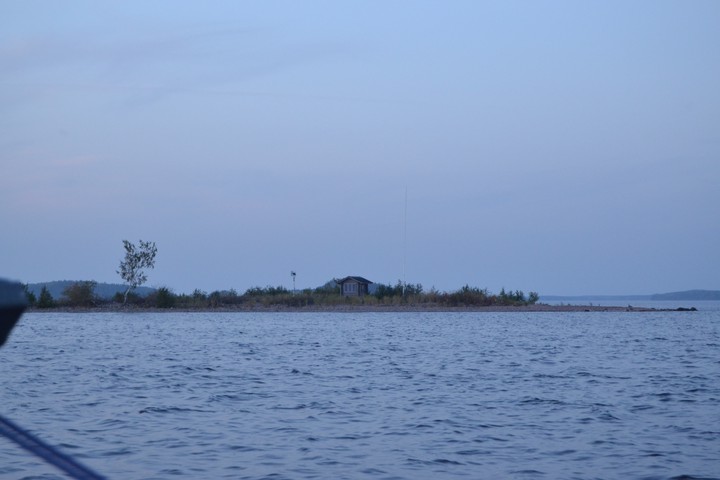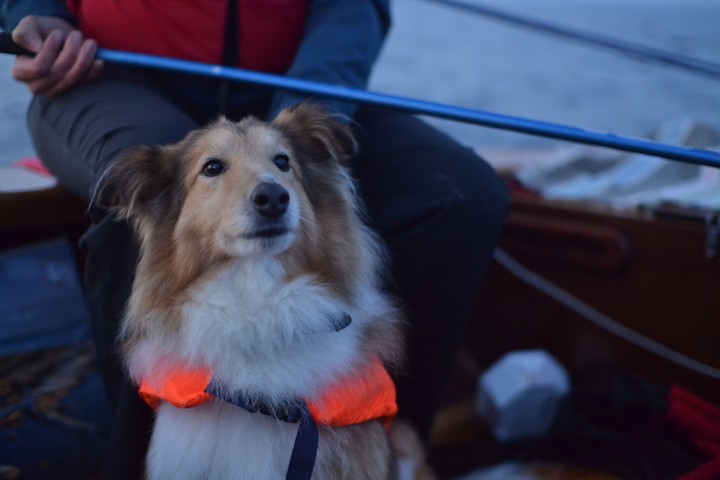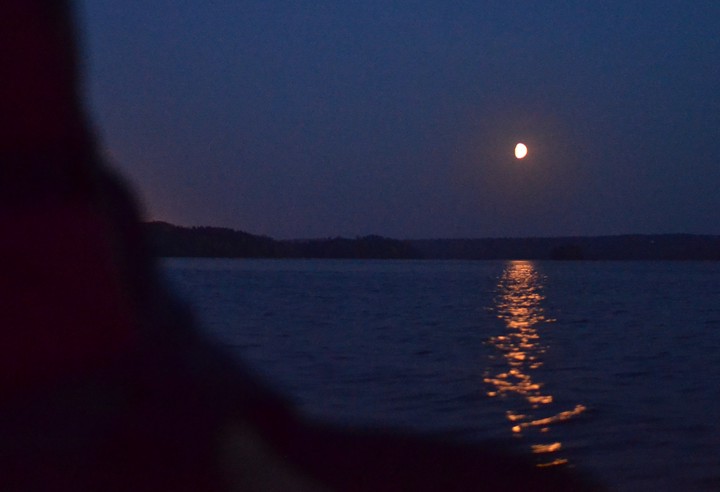Satamosaari
The sailing season seemed to be over, so I had packed the boat with gear for the winter. Then came the last weekend of September. The air temperature on land was forecasted to be around 20 degrees. The surface water temperature was well above 12.5 ° C, which I consider to be the limit for sailing without dry or wet suits. The wind would be 8-11 knots according to the forecast. And as there was no other commitments, unlike at the second half of August, it was obvious that we would head for the water!
There was a lot to see in autumn Saimaa. There were several sailing and motor crafts and the landscape was hued with autumn colors. The southeasterly breeze of 10 knots brought us nicely to Satamosaari. For some reason, the keel boats didn’t really keep up with Sarastus’ pace. Perhaps they had autumn fatigue or the reason was our lighter-than-usual cargo.
It was a little surprising how many boaters had come to the island to spend the warm autumn day there. Clearly, the change in weather had not gone unnoticed by many. We did not stay on Satamosaari for a long time, but after a picning set off, because it wasn’t long until the sunset.
We paddled out of the Satamosaari lagoon, after which the wind began blow on the sails. Sarastus ran along the open water of the lake.
I have to say that sailing on autumn Saimaa, just listening to the sounds of water and birds and watching the golden hour coloring the landscape, was a wonderful experience. We headed towards Hiekkapakka islet at a speed of about three knots. We had deliberately planned the trip so that as much as possible downwind and crosswind could be used on the return trip so that the cooling effect of the evening would be minimal. I managed in a T-shirt all the way to Hiekkapakka, where the change of direction caused the breeze to blow from the port side and at the same time the cooling effect of the sunset started to be felt.
Earlier during the trip, we had seen from afar that something had happened on Hiekkapakka that had changed its silhouette dramatically. On the way back, we sailed closer to it to see what had really happened on that little sympathetic rubble island. Clearly, someone had come to the conclusion that the island’s trees were starting to be so tall that it interfered with the Meteorological Institute’s weather station measurements. Thus, almost all the trees on the island had been cut down. Actually the “haircut” of Hiekkapakka looked pretty good after all.
The sun went sank and the moon rose. The civil twilight began and soon changed into an nautical twilight. The beacons were lit up. We got to experience moonlight sailing and at the same time admire the darkening lake.
On the south side of Muuttoluoto, where the four branches of the shipping lane meet, we experienced a bit of thrill. A ship approached from the north sailed slightly towards left. Before long, we saw its both side lights (red and green). That basically meant it was coming towards us! Since the wind was weak at that point, we decided to use the paddles. With the power of paddling, we managed get out from the shipping lane in time.
Before the slipway the nautical twilight turned into astronomical twilight, which human eye practically consider as darkness. During the rest of the journey the wind picked up making us to move at a speed of around five knots.
We arrived at the dark slipway where we restored the boat and then drove back to home. If the season ends here, then the end was magnificent!
